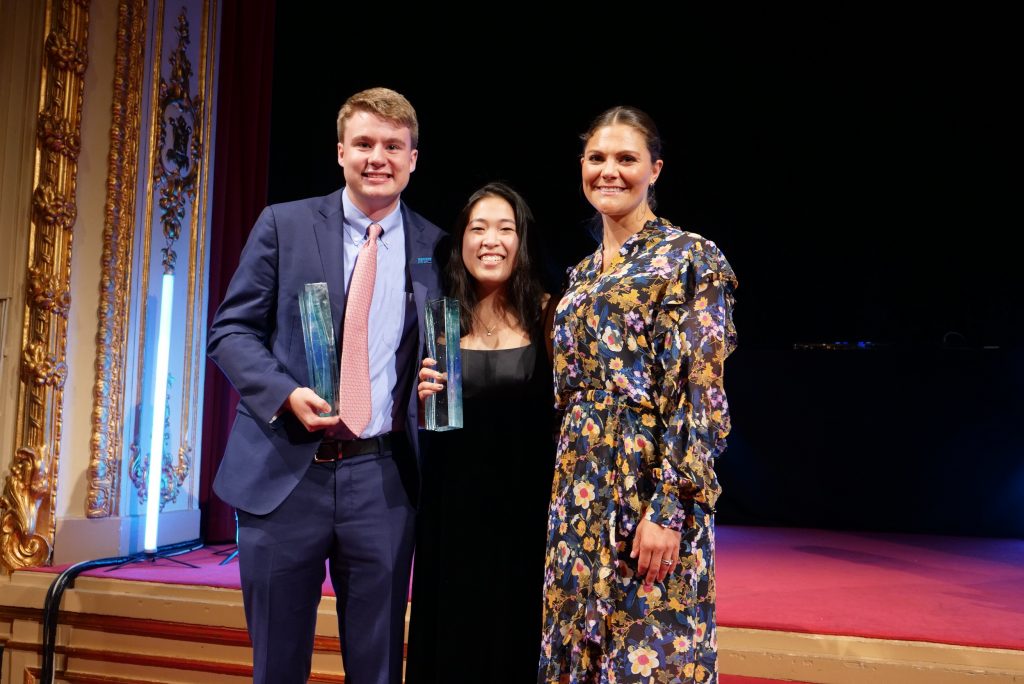5 September, 2017
Award-winning invention could change drinking water treatment
Ryan Thorpe and Rachel Chang have known each other since preschool. Now 17 years old, they recently won the Stockholm Junior Water Prize for a system that uses biosensors to detect individual colonies of four of the most common pathogenic bacteria found in water.
Thorpe and Chang are now seniors at Manhasset Secondary School on Long Island, New York. Impeller interviewed them during World Water Week in Stockholm just after they won their prize.
How does it feel to win?
Thorpe: It was such an amazing week, it was so fun and chock full of experiences that I will remember throughout my life. I couldn’t have imagined it ending any better.
Could you explain what your system does?
Chang: We created a system to detect and purify water contaminated with bacteria. We worked with e. coli, shigella, cholera, salmonella, some of the most common waterborne diseases today. We created graphene biosensors that generate an electric signal when bacteria come into contact with them. By reading the current on a screen, we can tell when bacteria are present.
How quickly does this work?
Chang: The detection occurs instantaneously. As soon as you put the sample on the biosensor, the current will begin changing if bacteria are present. That happens instantly. The purification takes about ten seconds to eliminate bacteria.
How could your system be used in different applications?
Thorpe: This device can be used for identification and immediate purification processes. It really has a wide range of applications in terms of both the developing and the developed worlds. It can be placed on site in a drinking water source in the developing world, and it can also be placed in piping systems in the developed world.
How did you get interested in water treatment?
Chang: I’d always been really interested and passionate about the environment. Then I was reading a journal article about the standard methods of detection for bacteria, which can take one to two days, and even up to a week. These methods also have detection limits of up to 1,000 colonies of bacteria, but the World Health Organization states that even one colony of bacteria in 100 ml of water is unsafe for consumption. So I really wanted to create a system that would improve upon these methods, and be able to reach the standards of the World Health Organization and expand clean water access.
Thorpe: I was really interested in water scarcity, and how a lot of articles point out that water scarcity is going to be the next source of global conflict. I came across this specific interest because every year our high school creates a quasi-journal where people submit their research abstracts. I was looking at very old ones, and I saw this word biosensor, and the newer journals didn’t have this word, so I looked it up. Basically, what a biosensor does is it takes something that we can’t see and converts it into a stimulus that we can see, and I really like that idea.
Do you have anything else you would like to add?
Chang: I guess that everyone really can make a difference. Even if it is just shutting off a faucet and making sure it doesn’t drip, that would save millions of gallons of water if everyone did that. Everyone together united can make a difference with water.
Thorpe: The solutions are out there, if you really try. If you just sit down and write down a list of all the different possible solutions to a problem, and you try to find out which one is the best, you are going to be able to solve it.
Chang: Hard work and perseverance definitely pay off.
By Chad Henderson, Impeller Magazine. Water News from Xylem.
